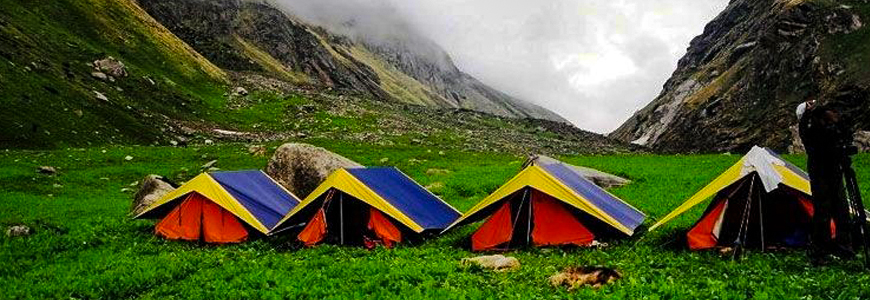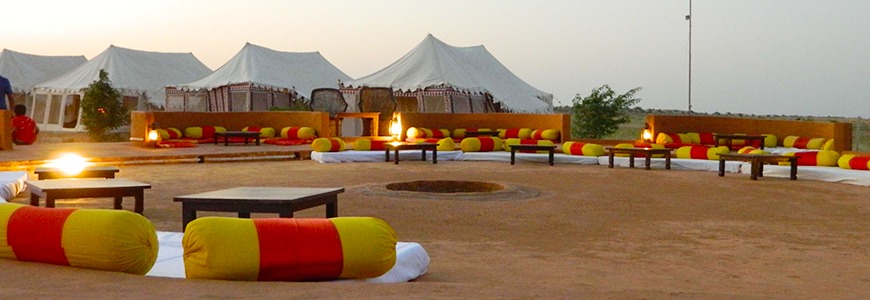10 Common mistakes to be avoided by Trekkers

Trekking is undoubtedly an amazing hobby to have. It is good for your health, to enjoy nature and have some quality time away from all the city noise. But often trekkers fall into the trap of making common mistakes that can become major problems once out there. Here are 10 common mistakes to be avoided by Trekkers:
1. Going too fast: Trekking means patience and perseverance. You cannot make haste and expect yourself to be safe. Going too fast can cause injuries apart from taking some serious toll on your health.
2. Packing heavy: It is always suggested to pack light as per the trek you are going for. Many trekkers pack extra clothes thinking that they might need them in case of emergency. But end up carrying them on their shoulders for no reason.
3. Not carrying the trekking stick: A trekking pole is a great trekking gear to maintain the stability especially while descending. Hence it is important, so save your energy and carry a trekking pole.
4. Heading out without a guide: There are various types or treks; the easy ones can still be done without the supervision of a guide. But in case of tough treks heading out without a guide is not suggested. The well-experienced guides will not only guide your way but will also help you in finding an accommodation up there.
5. Carrying a DSLR: Carrying a heavy DSLR on your shoulders with a heavy backpack will only make your experience worse. These days smartphones suffice to click decent pictures.
6. Not carrying sunscreen and sunglasses: If you want to avoid the painful suntan, carry a strong sunscreen and a pair of sunglasses with you. The harmful UV rays can do more damage than you can imagine.
7. Going without warm clothes: Even if it is summer back in your plain region, temperatures in mountains can be drastically extreme. In the night, the mountains can go very cold. Therefore, carry a good quality thermal, jacket, socks and gloves to protect you from the cold winds.
8. Not preparing enough about the trek: Going on a trek without doing proper homework can ruin your entire trip. Online you can find full of personal blogs and articles by trekkers who have been there before. So prepare and learn from their experience and don’t repeat the same mistakes they did.
9. Wear proper trekking shoes: Note that there is a difference between a regular sports shoe and a trekking shoe. The trekking shoes have harder soles good enough to absorb any rough or sharp terrain. Also, trekking shoes are lighter than regular walking shoes.
10. Not carrying a first aid kit: No matter how strong you consider yourself, never underestimate the circumstances you might face during trekking. Hence, it would be a mistake not to carry a proper first aid kit with you. Also, it is suggested to carry a small sewing kit with you for ripped clothes, backpacks or even tents.
Now that you have known these common mistakes avoid them during your next trek or hike. Some may ask if trekking and hiking are the same or different. By definition, Hiking involves a long energetic walk in a natural environment on hiking trails or footpaths for a day or overnight. Whereas, Trekking involves a long vigorous hike in the wild natural environment for multiple days.
The Differences between Hiking and Trekking
Hiking
- Typically half day to full day
- Hikes range from easy to strenuous
- Man-made signposts
- Fewer necessities to bring along
- Less expensive
- Physically strenuous
- Man-made roads and trails
- Great for beginners
- You can pack enough water
Trekking
- Two or more days
- Trekking is more intense
- Few to no signposts
- More materials necessary
- More expensive
- Physically, mentally, emotionally, spiritually challenging
- Variety of terrain and/or transportation
- A step up in difficulty from hiking
- You must plan for water consumption
So in case you are planning a trek soon, follow the packing principles efficiently so that you have maximum flexibility with minimum weight.
- It's all about the layers: This stands true in all types of travel, long-term and short, but especially for trekking into high altitudes. Temperatures can change very drastically during the day. Layering up makes sense to adapt to the changing temperatures.
- Rest and sleeping clothes: It is suggested to include an extra set of nightclothes to change into at the end of the day. These clothes will be dry, comfortable and relatively clean after the day of adventure. Hence resulting is a good night rest to be prepared for the next day.
- Never skimp on sun protection: It is a fact that as you advance higher in elevation, the sun becomes scary strong. So even if you tan beautifully on the beach without any sunscreen, be sure to pack ample and strong sunscreen on your trek. Carry a hat that will protect your face from the sun. It is miserable to deal with sunburn while trekking. Also, be sure to have sunglasses with quality lenses that protect your eyes.
But before you plan your first trekking trip, please be mindful of these basic rules of trekking.
Rule 1: Avoid playing loud music while trekking to disrupt with natures’ sound
Rule 2: Do not through plastic bottles and wrappers while trekking
Rule 3: Try and carry your water and food, if possible
Rule 4: Pack your bags light but also carry all that you need depending on your trek.
Rule 5: Restrict taking unnecessary risks
Rule 6: Take a break from electronic gadgets while trekking
Rule 7: Use all required safety measures wherever necessary
Rule 8: Do not carry any valuables with you on the trek
Rule 9: Restrict yourself from destroying the beautiful surroundings
Rule 10: Enjoy the trekking experience and enjoy nature
Most noteworthy, be mindful of the above mentioned and prepare accordingly to enjoy the trekking experience to the fullest.

 Add More
Add More 






